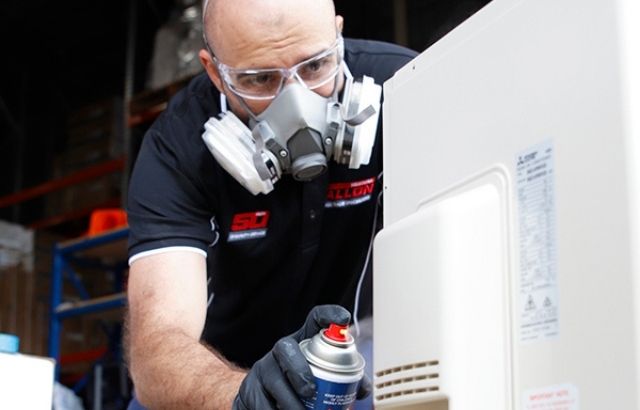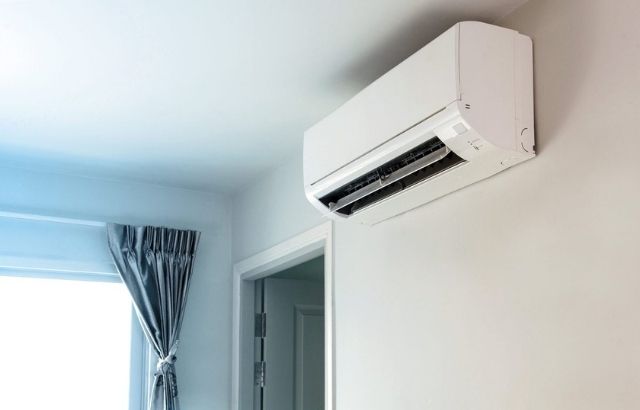Refrigerators have undoubtedly become essential appliances in our lives, and a malfunctioning refrigerator compressor can be a severe inconvenience. A refrigerator compressor is an essential appliance that lets it cool and preserves perishable food items for an extended period. In this guide, we will learn how to reset a refrigerator compressor.
However, it’s common for a compressor to stop working or fail to function adequately, leading to increased energy bills, spoiled food, and other issues.
Fortunately, resetting a refrigerator compressor is a relatively common and straightforward troubleshooting process that can be done with minimal effort.
If your refrigerator compressor is acting up, getting it back up and running as soon as possible is crucial.
In this Home Affluence post, we will guide you on resetting a refrigerator compressor to restore its performance to its optimal state:
- Unplug the refrigerator from the power outlet
- Locate the compressor at the back of the refrigerator.
- Check the temperature setting
- Remove any debris from the compressor
- Look for a condenser fan and an evaporator fan
- Check the condenser fan motor and evaporator motor
- Inspect the electrical connection points
- Check the compressor relay and overload protector
- Reset the compressor by pressing the reset button
- Plug the refrigerator back into the power outlet
We will discuss the causes of a malfunctioning compressor and the essential steps to reset it. We’ll also provide some tips to help prevent future issues with your refrigerator compressor.
How To Reset a Refrigerator Compressor
Unplug the refrigerator from the power outlet.

Resetting a refrigerator compressor is sometimes necessary to get it working correctly again. One easy way to do this is to unplug the refrigerator from the power outlet.
It can be constructive if the compressor has been running for an extended period, causing it to overheat or become overloaded.
Unplugging the refrigerator for a few minutes allows the compressor to rest and cool down, potentially resolving any issues with its operation.
However, it’s important to note that resetting the compressor is only a temporary solution and may not always work.
If the issue persists, it is recommended to seek help from a professional technician to diagnose and repair the problem.
Locate the compressor at the back of the refrigerator To Reset A Refrigerator Compressor.

If you’re experiencing issues with your refrigerator, resetting the compressor is often a good first step. While this may seem daunting, the process can be relatively simple when you know what to do. Firstly, locate the compressor at the back of the refrigerator.
It may require the removal of a panel, depending on the make and model of your fridge. Once you’ve located the compressor, unplug the refrigerator from the power source and wait about 15 minutes.
After waiting, plug the fridge back in and switch it on. It should reset the compressor and, in many cases, resolve the issues you were experiencing.
If this doesn’t work, exploring other solutions or seeking professional assistance may be necessary.
Check the temperature setting.

If you’re experiencing issues with your refrigerator not cooling correctly, you may need to reset the compressor. One of the first and most straightforward steps is to check the temperature setting.
Review the user manual for your specific refrigerator model to ensure the temperature settings are configured correctly.
Locate the temperature control switch or knob and ensure it is set to the correct temperature.
If this doesn’t solve the issue, consider moving on to other possible solutions, such as inspecting the condenser coils, checking the evaporator fan, or calling a professional for further assistance.
Properly maintaining the temperature settings of your refrigerator can help ensure it operates at peak performance and prolong its lifespan.
Remove any debris from the compressor.

When resetting a refrigerator compressor, one of the crucial steps is removing any debris on it. The compressor is an essential component of the refrigerator, and a buildup of dust or debris on the compressor can hamper its functioning.
To clean the compressor, first, turn off the power supply to the unit. Locate the compressor at the back of the refrigerator and remove the back panel to access it.
Use a soft-bristled brush or a vacuum cleaner with a brush attachment to remove loose debris and dust from the compressor.
It’s crucial to ensure there is no buildup of debris left behind, as this can lead to overheating and damage to the compressor.
Once the compressor is clean, replace the back panel and restore power to the refrigerator. This simple step can go a long way in ensuring the smooth functioning of the refrigerator compressor, prolonging its lifespan, and avoiding costly repairs.
Look for a condenser fan and an evaporator fan.

Resetting a refrigerator compressor can be daunting, but you can try a few simple things before calling in a professional.
The condenser and evaporator fans are the first to check when resetting a refrigerator compressor.
These two fans work together to circulate air and keep the system cool. A malfunctioning fan can cause the compressor to overheat and shut down.
Try resetting the fans by unplugging the refrigerator for a few minutes and then plugging it back in. Check the fan blades for any blockages or damage if the fans still do not start working. In some cases, it may be necessary to replace the fan altogether.
Before proceeding with any repairs or attempting to reset the compressor, it is crucial to refer to the manufacturer’s instructions or consult with a professional technician.
Check the condenser fan motor and evaporator motor

When your refrigerator suddenly stops cooling your food, there’s a possibility that the compressor has shut off. Try resetting the compressor before calling a professional or rushing to buy a new fridge.
One of the simple steps to reset the compressor is to check the condenser fan motor and evaporator motor. The condenser fan motor is located in the back of the refrigerator and helps to cool the compressor.
If the motor is blocked or faulty, it can cause the compressor to overheat and stop cooling.
On the other hand, the evaporator motor is located behind the freezer wall and circulates cold air throughout the fridge.
Check if the motor runs smoothly and ensure it’s free from obstructions like ice buildup or debris. Doing this lets you troubleshoot and fix the problem without incurring costly repairs.
Inspect the electrical connection points.

If your refrigerator stops cooling or working altogether, it may be a sign that the compressor has stopped working. Before calling a repair professional, one of the first steps you can take is to reset the refrigerator compressor. Inspecting the electrical connection points is a crucial step in this process.
Ensure the refrigerator is unplugged from the power source before inspecting the electrical connection points. Inspect any loose or disconnected connections in the compressor and carefully reconnect them.
Ensure there is no rust or corrosion on the connection points, which may hinder proper electrical flow.
Once you have ensured all the connections are firmly in place, you can plug the refrigerator back in and see if it starts working again. If not, it may be necessary to seek professional help.
Check the compressor relay and overload protector.

When a refrigerator stops cooling, the compressor is often the culprit. Sometimes, a simple reset is needed to solve the problem. Before calling a repair technician, you can take a few easy steps to reset the compressor.
One option is to check the compressor relay and overload protector. The compressor relay is responsible for starting the compressor, and the overload protector helps to protect the compressor from overheating.
Begin by unplugging the refrigerator and removing the relay cover. If the relay appears to be discolored or burnt, it may need to be replaced.
On the other hand, if the relay is in good condition, but the overload protector is tripped, it can be reset by simply pressing the red button.
If this does not solve the problem, it may be necessary to replace the compressor altogether.
While this can be an expensive repair, it is often more cost-effective than purchasing a brand-new refrigerator.
Reset the compressor by pressing the reset button.

If you are experiencing cooling issues with your refrigerator, it could be due to a malfunctioning compressor.
Sometimes, the compressor can reset by pressing the built-in reset button, eliminating the need for professional repair. Unplug the refrigerator from the power source to reset the compressor to avoid electrical shock.
Locate the compressor on the back of the fridge and identify the reset button, which may label depending on your specific model. Press the reset button for approximately three seconds, then release it.
After resetting the compressor, plug the refrigerator back into the power source and allow it to run for several hours to see if the cooling issue is ready.
It is important to note that while resetting the compressor may fix the issue, it should not view as a permanent solution, and a professional technician should contact you if the problem persists.
Plug the refrigerator back into the power outlet.

Resetting a refrigerator compressor can quickly and easily solve various cooling problems. A compressor reset may help restore regular operation if your fridge is malfunctioning.
The process involves unplugging the refrigerator to reset the compressor and then plugging it back in.
Unplug the power cord behind or beneath your unit from the wall socket. Wait at least 30 seconds, and then plug the refrigerator back in.
This simple reset can help the compressor operate correctly and may save you the cost of a service call or purchasing a new appliance.
Expert Opinion
Resetting your refrigerator compressor can seem intimidating, but it can do quickly and easily with the right tools and basic knowledge.
Always begin by unplugging your refrigerator, and follow the manufacturer’s guidelines carefully.
Remember to seek professional help if you need clarification on something, as playing around with the electrical components of your refrigerator can be dangerous if you are not skilled in handling them.
With these simple steps, you can save money on repairs and extend the life of your refrigerator.




